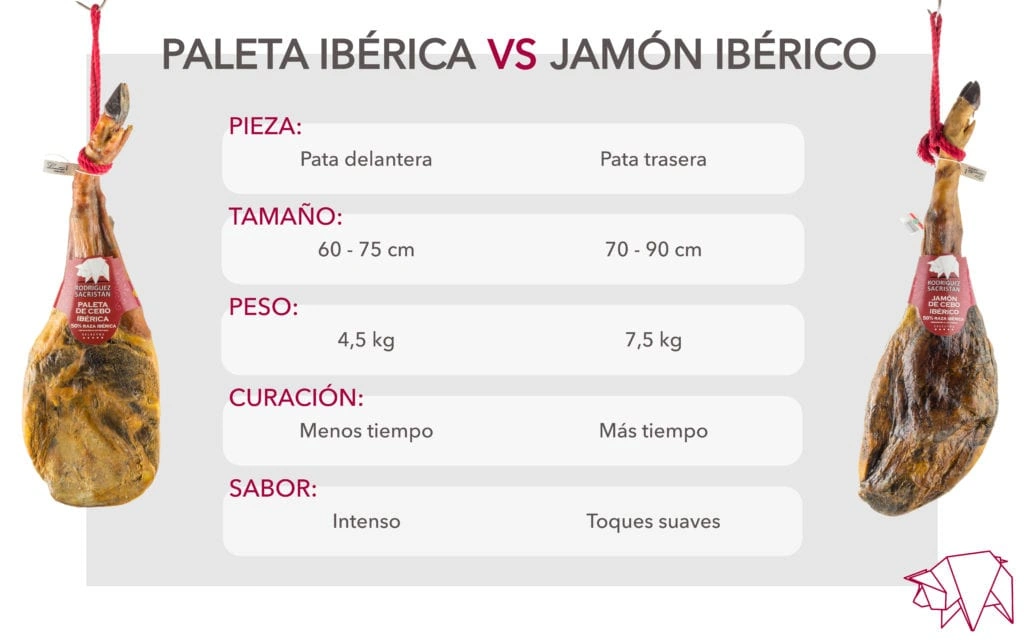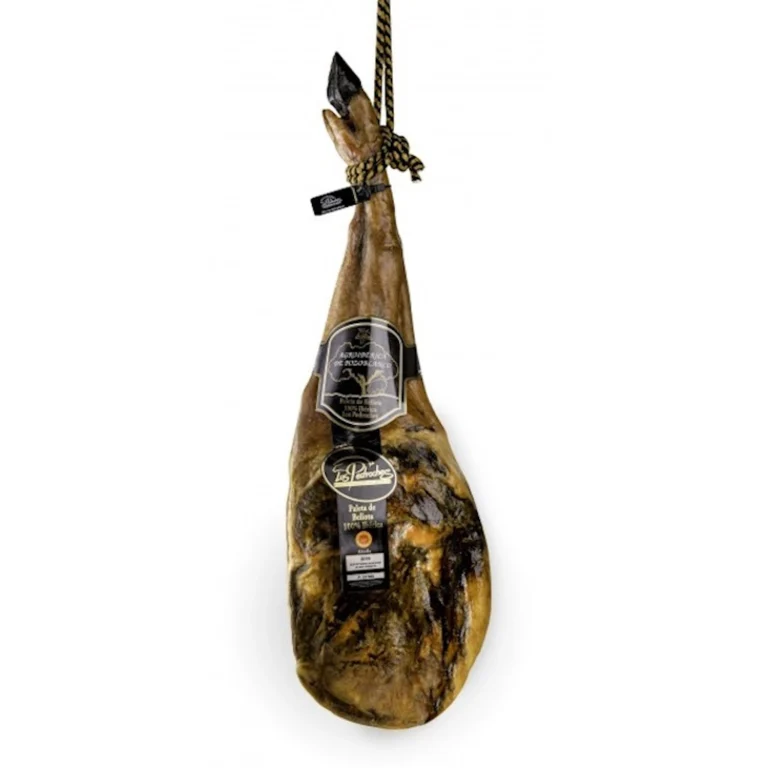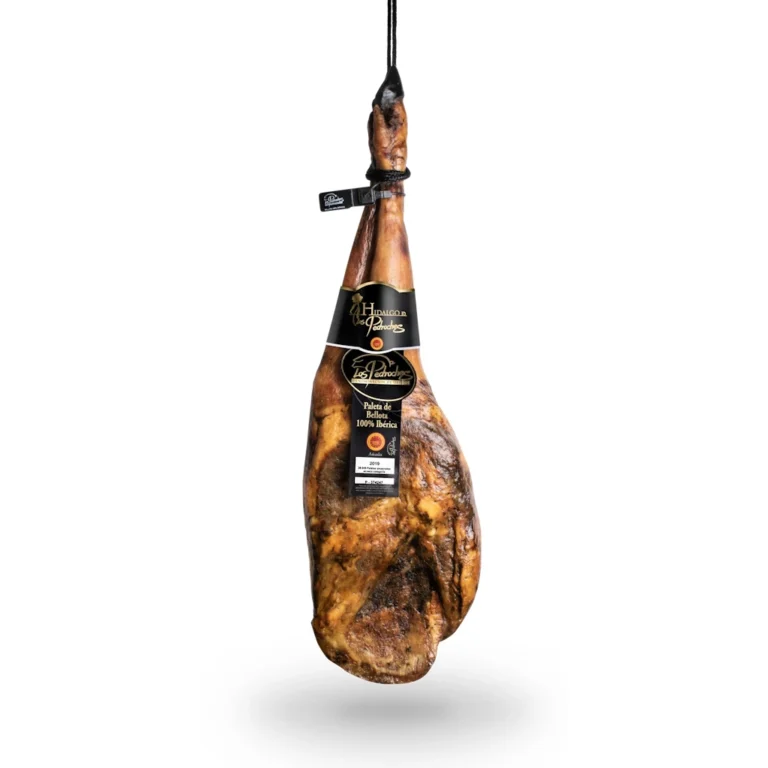Differences between Iberian ham and Iberian shoulder
- Production
Indice

Differences between Iberian Ham and Iberian Shoulder: The Definitive Guide for the Discerning Consumer
Iberian ham and Iberian shoulder are two delicacies of Spanish gastronomy, appreciated worldwide for their flavor and quality. However, despite their similarity, there are key differences that every consumer should be aware of to avoid confusion and ensure an informed choice.
Origin and Anatomy: The Basis of Distinction
The fundamental difference between Iberian ham and shoulder lies in their anatomical origin. Iberian ham is obtained from the hind legs of the Iberian pig, while Iberian shoulder comes from the front legs. 1 This anatomical distinction directly influences the characteristics of each product.
Iberian Ham
- It comes from the pig’s hind legs.
- These legs are larger and meatier.
- They have greater intramuscular fat infiltration.
- Its shape is more stylized and elongated.
Iberian Shoulder
- It comes from the pig’s front legs.
- These legs are smaller and more compact.
- They have less intramuscular fat infiltration.
- It has a more triangular shape.
Flavor and Texture: A Different Sensory Experience
The anatomical differences translate into nuances of flavor and texture that distinguish Iberian ham from Iberian shoulder.
Iberian Ham
- Softer and more delicate flavor.
- Juicy and creamy texture.
- Greater complexity of aromas and nuances.
- This product is cured for a longer period, from 24 to 48 months.
Iberian Shoulder Ham
- More intense and pronounced flavor.
- More fibrous texture.
- More powerful and persistent aromas.
- It is cured for a shorter period, from 12 to 24 months.
Price and Performance: Economic Considerations
Price is another differentiating factor between Iberian ham and shoulder. Iberian ham, due to its larger size, curing time, and yield, tends to be more expensive than Iberian shoulder.
Iberian Ham
- Higher price.
- Higher meat yield.
- Higher percentage of lean meat.
Iberian Shoulder
- More affordable price.
- Lower meat yield.
- Higher proportion of bone and fat.
Origin and Breed: Factors Determining Quality
Both Iberian ham and shoulder can come from Iberian pigs, but the final quality of the product varies depending on the animal’s diet and handling.
Iberian Acorn-Fed Ham/Shoulder
- Comes from Iberian pigs fed on acorns in the pasture.
- Exceptional flavor and aroma.
- Greater infiltration of intramuscular fat.
Iberian Cebo de Campo Ham/Shoulder
- Comes from Iberian pigs raised free range and fed with natural pastures and feed.
- Intense flavor and aroma.
Iberian Cebo de Cebo Ham/Shoulder
- Comes from Iberian pigs raised on farms and fed with feed.
- Milder flavor and aroma.
Care Tips Consumer
- Read labels and certifications of origin carefully.
- Pay attention to the product’s color, aroma, and texture.
- Consult an expert for personalized advice.
- Do not accept Iberian shoulder ham if you are paying for Iberian ham.
Conclusion
Understanding the differences between Iberian ham and Iberian shoulder ham is essential to fully appreciate the richness of Spanish cuisine. When choosing between these two delicacies, consider your taste preferences, budget, and occasion.
Nota importante: aceitedelcampo.com promueve el consumo del aceite de oliva virgen extra por sus cualidades culinarias y beneficios para la salud. No obstante, no debe sustituirse ningún medicamento o tratamiento actual sin la orientación de un profesional de la salud.
Productos que te pueden interesar
16,50 € – 320,00 €Price range: 16,50 € through 320,00 €
140,00 € – 156,00 €Price range: 140,00 € through 156,00 €



